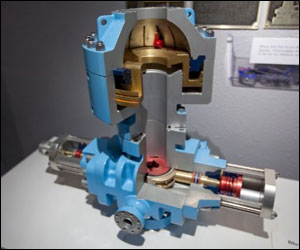Blowout Preventers
The Role of the Blowout Preventer (BOP) in Drilling Operations
Anyone who wants to be well-versed in oil drilling must understand the crucial role of the blowout preventer (BOP).
 Understanding each component of a rig’s safety system means understanding how they work together, as well as their individual contributions, for efficient and safe operation. Essentially, a blowout preventer (BOP) shuts off the valve leading underneath the machinery to stop any liquid from surfacing in a dangerous explosion, or a kick.
Understanding each component of a rig’s safety system means understanding how they work together, as well as their individual contributions, for efficient and safe operation. Essentially, a blowout preventer (BOP) shuts off the valve leading underneath the machinery to stop any liquid from surfacing in a dangerous explosion, or a kick.
A level of containment must be maintained when working with the mud and substances that could cause breaks in the flow of extraction. There are several features in a BOP that play different roles, and two general types of valves to assist the apparatus in case of a bad kick. Let’s take a look at some of these.
Accumulator
The main control unit is called an accumulator. It controls all systems that interconnect to prevent emergency situations. The system activates based on hydraulic pressure, and the typical accumulator houses pumps, a hydraulic reservoir, a control manifold, control valves, compressed gas bottles, and several other facets. Often, an accumulator holds enough power to allow for BOP units and their backup functions to run when other systems fail, so it is mounted on top of the BOP stack itself.
Annular and RAM
An annular BOPis what closes the space around the diameter of the drill pipe, but since the actual system cannot be closed with a value due to the drill string, this controls the air flow for the mud without cutting off any other systematic elements. The annular BOP sits at the top of the BOP stack, to provide the most efficient airtight option. A RAM BOPalso works to prevent any unwanted materials from exploding in the system, but several are needed in the BOP stack to ensure optimum safety.
RAM Valves and the BOP Stack
All the parts of a RAM BOP (and sometimes an annular BOP component) make up a BOP stack. Types can include:
- Blind RAMs, which close over any portion that lacks a drillstring
- Choke manifolds, a system of adjustable variables and pressure sensors that allow for the control of various fluids in different directions.
- The choke line valve assists in directing mud to the choke manifold when a kick occurs.
- A kill line valve, which acts as a backup to the standard drillpipe
- A casing RAM that can adjust to close around different piping sizes in the event of a kick
RAM valves can be stacked a number of different ways, for multiple types of efficiencies. Some BOP systems can reach massive heights, especially in deep-sea drilling where a BOP system has a completely different purpose for successful extraction.
Keystone Energy Tools
Let the experts advise you on the best oil rig products. Keystone Energy Tools has high-quality equipment and tools for every safety need. Get a quote and browse our online store to outfit your drilling projects at every level.



